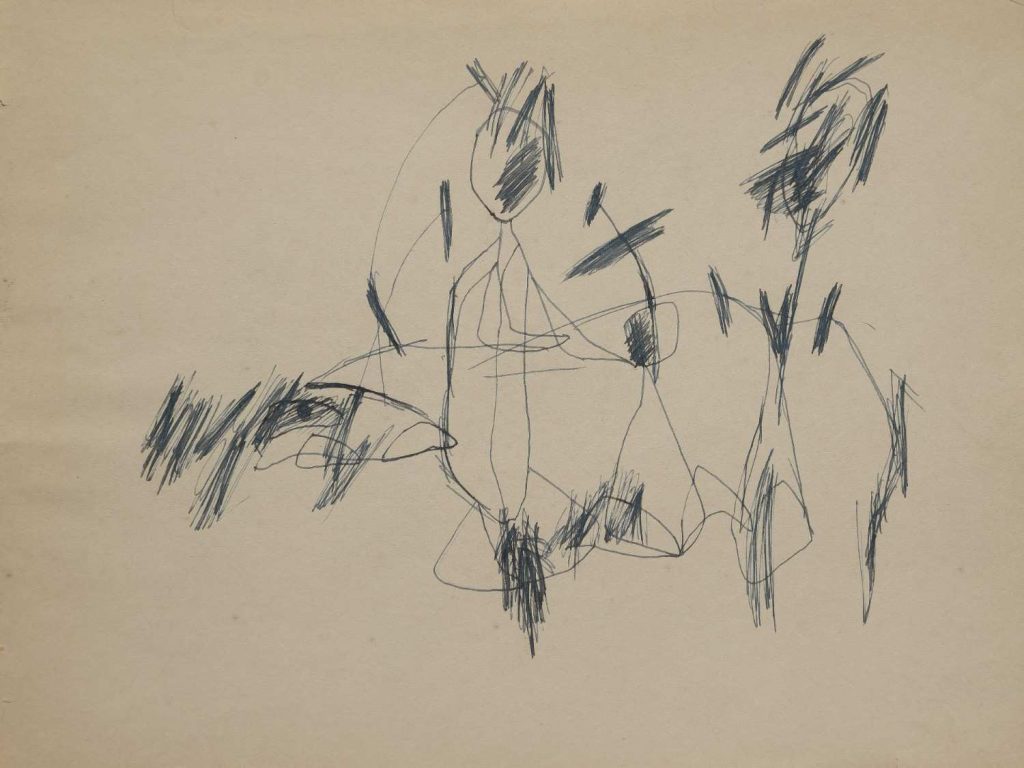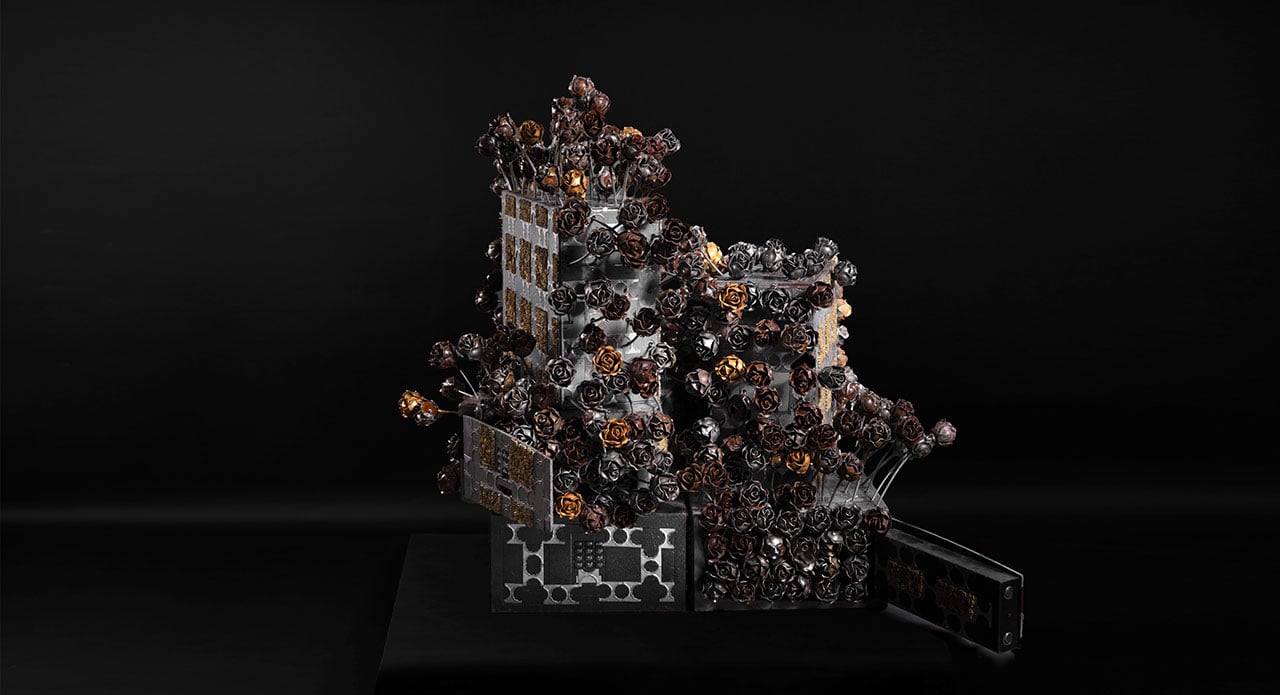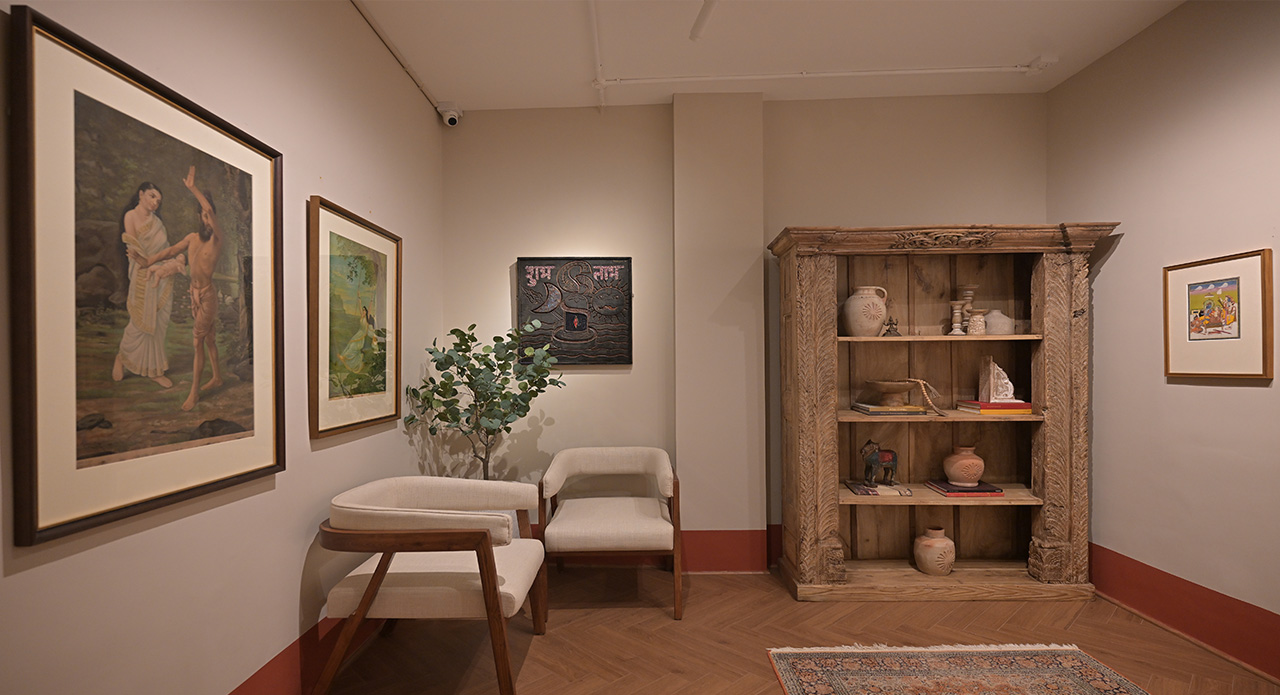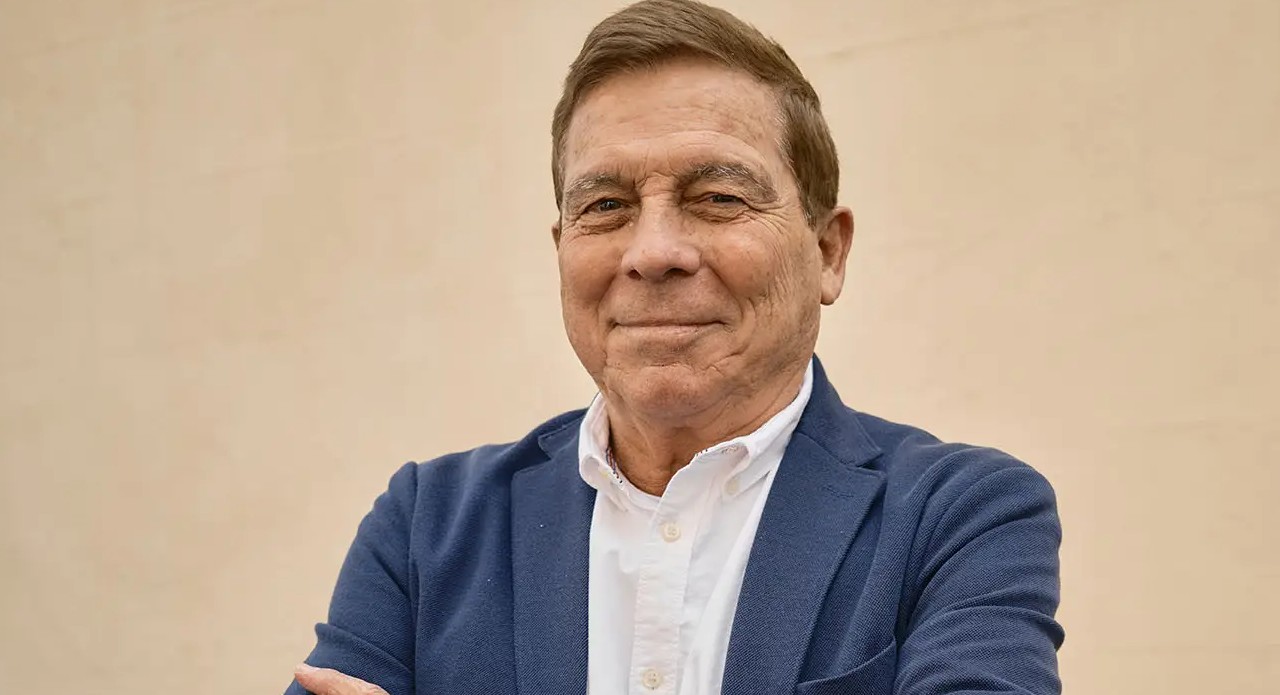In October of 2025, the Jaipur Centre of Culture and Arts (JCCA) opened its doors for an intimate media walkthrough; an experience that felt like stepping into the emotional landscape of one of India’s most quietly searing modern masters: Somnath Hore. The exhibition, A Prelude to Wounds – Unseen Somnath Hore, curated by Jyotirmoy Bhattacharya, brings into focus the rarely seen sketches Hore made in the winter of 1966–67, works that would ultimately lay the foundation for his iconic Wounds series. The exhibition is on view till December 31, 2025.

The sketches, preserved for decades by Hore’s daughter Chandana Hore, are minimalist yet devastating, stripped of embellishment but heavy with feeling. At JCCA, they have been transformed from fragile pages of an old sketchbook into individually framed works—each commanding attention, each insisting on an encounter.
Dr. Tarun Sharda, co-founder of JCCA, discussed with Outlook Luxe, the curatorial intent behind A Prelude to Wounds and shed light on why Somnath Hore’s rare early sketches resonate so powerfully today.
Question: What inspired the decision to curate an exhibition around Prelude to Wounds?
Tarun Sharda: Most contemporary artwork is abstract in nature, or an artist’s interpretation of the beautiful world around him/her, or the churning of thoughts and dreams in his/her mind, or is inspired by the mythical world of religion or the metaphysical world of stories. If artwork does represent the grotesque, it usually tries to exaggerate rather than simplify the perversity of human suffering. Here is an artwork that tries to simplify pain, uses minimalism to present it, and in the process strikes directly at a person’s heart without embellishing it with color or form. The rarity of such an artwork is not easy to forget or be passed by. And thus JCCA’s decision to bring it to the world and curate this exhibition.

Question: How does this exhibition fit into the larger narrative of Somnath’s Hore’s artistic journey?
TS: Imagining the world from Somnath Hore’s perspective, one will see a person living and experiencing life of want and suffering amidst famines and human exploitation in the early decades of 20th century India. The minimalist sketches in the “Prelude to Wounds” portray an image of Somnath’s empathy towards the human pain that he saw all around him.
Question: What aspects of Hore’s personal experiences-such as his involvement in the Bengal famine or the Tebhaga movement- did you want to foreground in this curation?
TS: The famine of Bengal was one of the worst man-made disasters of the early 20th century that led to human suffering at a scale hitherto unseen. Any person living during those times, and a sensitive person like Somnath Hore, more so, would not be left unaffected by that singular event. Later, the Tebhaga movement was a war cry by the same suffering masses who tried to protest against the ever repeating cycle of exploitation. These two experiences were seminal in all the artworks that Hore created to express his pain. Something that is most accurately captured in the minimalist sketches showcased in this exhibition.

Question: What is in the name, “Prelude to Wounds”?
TS: “Wounds” is a famous series of artworks created by Somnath Hore in the 1970s. The series of artworks showcased at JCCA was created by Somnath Hore in the winter of 1966/67. This series was a starting point for the Wounds series. Hence, the name, “A Prelude to Wounds”.
Question: Somnath Hore’s works are often described as meditations on human suffering. How do you approach presenting such intense emotional material in a gallery context?
TS: The juxtaposition of minimalism in a fine arts setting brings out just the kind of “wow” feeling that only a true connoisseur of art can appreciate. Transforming them from the original condition, in the form of a collection of pages of an old sketchbook into each individual piece of art framed separately and displayed in its own right, brings out the emotions embedded in each sketch. Running through the pages of a sketchbook, a person is in a hurry to go through all the artworks at once, but seeing each piece individually holds a person’s gaze, allowing them to spend time with each artwork, and understanding the emotions of Somnath Hore, as he went through the journey of his life among the suffering masses of early 20th century India.
Question: How do you think Prelude to Wounds resonates with the contemporary issues of violence, displacement, and resilience?
TS: The world was never a quiet place, and it seems it never ever will be. Hunger, suffering – whether man-made or brought on by nature – will always remain; in some part of the world or another. As mere humans, we can try to heal, but mostly we only end up helplessly watching, empathising and lamenting. Perhaps, Somnath Hore realised this long ago. Perhaps that was the pain that he was trying to express through his paintings. These paintings will always remain contemporary, whether we showcase them today, or whether we bring them out for display a century later.

Question: What were some challenges you faced in assembling or interpreting Hore’s work for today’s audience?
TS: Beyond the physical challenge of taking extreme care to handle the delicate paper that is nearly 60 years old, to restore it and then frame each artwork, without damaging it; interpreting the work was perhaps the most difficult challenge, as it involved trying to step into the shoes of Somnath Hore and understanding the history and reliving the times and moments through which he lived and then imagining how those moments affected the artwork that he created. Then there was the fear whether today’s audience, used to living in luxury and comfort, would ever be able to fathom the tribulations of the people who lived in a totally different world, nearly a century ago.
Question: If Somnath Hore were alive today, what kind of dialogue do you think he would want viewers to have with his work?
TS: Were he alive today, Somnath Hore would like his viewers to be able to feel the same pain and empathy that he felt, the anguish that makes a person human. The suffering that is still prevalent in the society. He would want his viewers to understand that there is a world out there that you only hear of, but may have never seen.
JCCA’s Role: A Bridge Between Modern Masters and Today’s Audience
With this exhibition, JCCA continues its mission of honouring India’s artistic legacy by placing modern masters in conversation with contemporary audiences. Since its founding by Monika and Dr. Tarun Sharda in 2023, the centre has quickly become a hub for cultural dialogue, previously hosting celebrated exhibitions such as Under the Mask (Himmat Shah) and Forms and Myths (Manu Parekh).
A Prelude, Not a Conclusion
By naming the show A Prelude to Wounds, the team consciously situates these sketches not as finished statements, but as beginnings; the quiet stirrings of a visual language that Hore would refine, deepen, and immortalise in the 1970s through his Wounds series.
It is an origin story, a glimpse into the moment before a storm. An invitation to witness the emergence of an artist grappling not with form or abstraction, but with the rawest truth of human existence.











